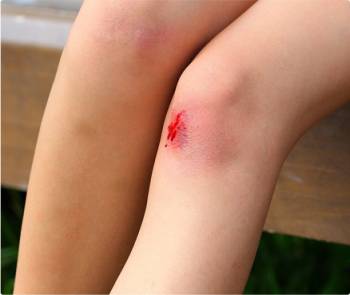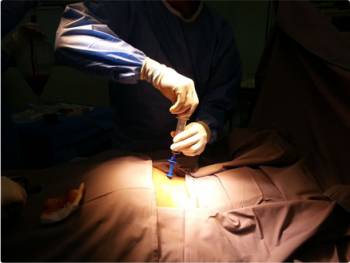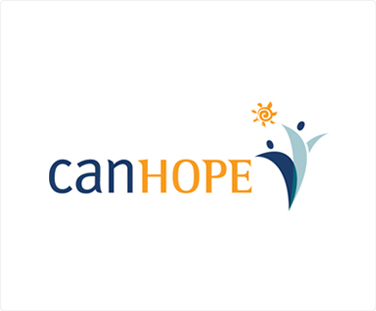Acute Lymphoblastic Leukemia
Acute Lymphoblastic Leukemia (ALL) is a type of blood cancer that affects immature white blood cells from the bone marrow. The immature cells multiply in an uncontrollable manner and crowd the bone marrow. This obstructs the production of normal blood cells. Children with ALL suffer from anaemia, recurrent infections, bruises and bleeding easily as their bone marrow does not produce enough red blood cells, white blood cells and platelets.
How Common is ALL in Children?
ALL is the most common form of cancer in children. Every year, about 30-40 out of a million children will be diagnosed with ALL. Of every three found to have cancer, one will have ALL.
What Causes It?
 There are no proven causes of ALL though research has been done to identify the many possibilities. There are some probable risk factors that are thought to cause genetic damage which may lead to the development of ALL:
There are no proven causes of ALL though research has been done to identify the many possibilities. There are some probable risk factors that are thought to cause genetic damage which may lead to the development of ALL:
• Infection: The delayed experience with common childhood infections or an abnormal response by the child’s immune system to these infections may be involved. ALL is not contagious. Children cannot get leukemia from other children.
• Ionizing radiation: Children exposed to huge doses of ionizing radiation (Energy produced by X-rays and radioactive materials) before birth or in their early years may be more at risk of developing ALL.
• Genetic factors: ALL is not an inherited disease, but children with certain congenital disorders such as Down syndrome are at a higher risk of developing ALL.
Signs & Symptoms
Symptoms of ALL are mainly caused by the lack of normal blood cells in the blood system. These include:
 • Anaemia caused by low red blood cells level.
• Anaemia caused by low red blood cells level.
• The child may appear tired easily and look pale.
• Easy bruising or bleeding due to low platelets level.
• Frequent or persistent infections occur when the child does not have adequate mature white blood cells to fight infections.
• Bone and/ or joint pain
• Other complaints which may be included are swollen lymph nodes, loss of appetite, loss of weight, chest pain and abdominal discomfort.
Diagnosis & Assessment
A complete evaluation of ALL includes blood tests and bone marrow examination.
Full Blood Counts (FBC)
This test involves taking a blood sample and sending it to the laboratory. Red blood cells, white blood cells and platelets will be counted. The cells will also be examined under the microscope to look out for abnormal blood cells.
 Bone Marrow Examination
Bone Marrow Examination
This test is done to confirm or (refute) a diagnosis of ALL. This examination allows the doctor to decide on the best treatment for the child. This procedure involves taking a small sample of bone marrow from the hip bone for laboratory tests. A diagnosis is confirmed by the presence of leukemia cells in the bone marrow. Additional tests will also be done to ascertain the type of leukemia and to predict the outcome after treatment.
Cerebro Spinal Fluid (CSF) Examination
A small sample of the CSF that surrounds the brain and spinal cord will be collected in a procedure known as Lumbar Puncture. This sample is tested in the laboratory for presence of leukemia cells within the central nervous system. Additional treatment is needed if leukemia cells are detected in the CSF.
Other Tests
Other laboratory tests and x-rays will provide information about the functions of various vital organs and the general health of your child. These tests may be done from time to time to compare the progress of your child in the later phase of treatment.
Treatment & Care
A combination of chemotherapy has been proven to be the best treatment for children with ALL. This can be given by mouth, by injection into the vein or into the cerebrospinal fluid. Chemotherapy may be used in conjunction with radiation therapy if required.
Children with ALL treated in contemporary medical facilities have about 80% chance of cure after treatment. Prompt medical attention and aggressive therapy are important for the best progress.
Is Bone Marrow (or Stem Cell) Transplantation Needed?
Transplantation treatment is generally not required. Bone marrow transplantation will be required for leukemia cells that carry certain molecular changes, no response to chemotherapy and when the disease comes back during or after treatment.
Why Children With ALL May Receive Different Treatment?
Treatment of ALL is determined by the leukemia cell type, molecular changes and the initial response to chemotherapy. This is meant to maximize the chance of cure while avoiding an excess of long-term side effects from treatment.
Leukemia cells are classified at the time of diagnosis into B-cell or T-cell disease. They are also studied to see if they have any chromosomal or molecular changes at the DNA level. The reduction of leukemia cells both in the blood and in the bone marrow is closely monitored during treatment. These are important to determine the prognosis of a child with ALL.
What Are the Side Effects of Treatment?
Most of the side effects of treatment for ALL come from the chemotherapy. Chemotherapy kills leukemia cells that reproduce rapidly. It also affects fast growing normal cells, including the cells from the hair, guts, mouth and bone marrow.
Nausea, vomiting, presence of mouth ulcers and hair loss are common but temporary. Measures will be taken to minimize the discomfort of anaemia and thrombocytopenia (reduction in platelet count) is almost universal. Transfusion treatment is commonly required to reduce the adverse effects of anaemia and to prevent or control bleeding due to low platelet counts. Advice will be given on precautions against infection due to neutropenia (low white cell count).
Chemotherapy may have long-term side effects such as toxicities to the heart, hormonal functions and later fertility. There is also a small risk of developing a second cancer in later life, especially when radiotherapy has been used.
Will there be any Risk to Other Family Members?
ALL is almost never hereditary in origin and ALL affecting more than one member of the family is extremely rare. Like other cancers, ALL is not contagious and cannot be passed from one individual to another, even with close contact or food sharing. Therefore, parents should not be burdened by the fear that the disease will affect a subsequent sibling.
What a Parent can do to Help a Child with ALL?
Parents are the greatest and most important support person to a child with serious illness such as ALL. The medical and nursing team is always available to discuss with the parents about the nature of the illness, the treatment and its side effects, and care of the child after the completion of treatment. We believe that all children with cancer should have the opportunity to recover physically and emotionally. Caring parents play an important role in any successful treatment.
What kind of support is available?

CanHOPE, is a non-profit cancer counselling & support service initiated by Parkway Cancer Centre.
As part of the holistic approach towards cancer treatment, CanHOPE works closely with the medical & allied health professionals, offering a wide range of resources & information about cancer in helping patients & their caregivers to make effective, informed decisions in their treatment journey.
Join us in our support programmes that are available on a monthly basis.
CALL our CanHOPE counsellors: +65 67389333 or e-mail:
Acute Lymphoblastic Leukemia originally appeared on Parkway Cancer Centre and has been republished with permission
Further Reading
The article above is meant to provide general information and does not replace a doctor's consultation.
Please see your doctor for professional advice.
